While their appearance may seem harmless—even pretty—the reality is far more alarming. Apple snails are recognized as one of the most destructive invasive species in the world, capable of damaging crops, ruining aquatic habitats, and outcompeting native species.
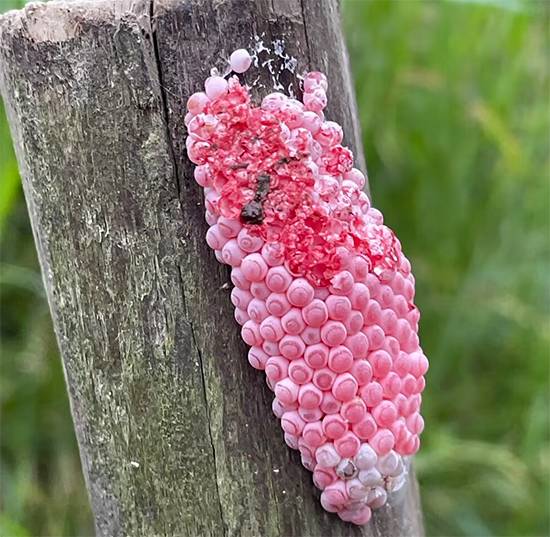
Originally from South America, these snails have made their way across the globe through a combination of aquarium releases, rising temperatures, and accidental introductions. Their ability to survive land travel, adapt to new environments, and reproduce quickly makes them especially dangerous. Understanding why apple snails are invasive, how they spread, and what you should do if you find their eggs can help protect your garden and the surrounding ecosystem. This guide will walk you through everything you need to know—from identification to safe removal and long-term control.
Popular aquarium pets that became an invasive menace
Apple snails, especially species like Pomacea bridgesii and Pomacea diffusa, are beloved in the aquarium world. They’re known for being plant-safe, easy to care for, and visually appealing. Their shell colors range from brown and yellow to blue, purple, and jade, with some sporting intricate banding patterns. Aquarium enthusiasts also appreciate their impressive size—growing up to 6 inches, about as large as a baseball.
However, not all apple snail species are harmless. Many varieties popular in aquariums can become serious pests if released into the wild. Once they escape into natural waterways, they feed aggressively on aquatic vegetation, disturb native species, and rapidly multiply. While some regions consider them edible delicacies, their ecological effects greatly outweigh any culinary interest.
Why apple snails spread so quickly
Apple snails rank among the world’s 100 Worst Invasive Species for good reason. Their biological traits give them a major advantage over native wildlife. They thrive in warm, wet environments such as ponds, lakes, and swamps and can survive fluctuating water levels by burying themselves in mud. Their operculum—a protective “lid” that seals their shell—helps them retain moisture and endure dry conditions.
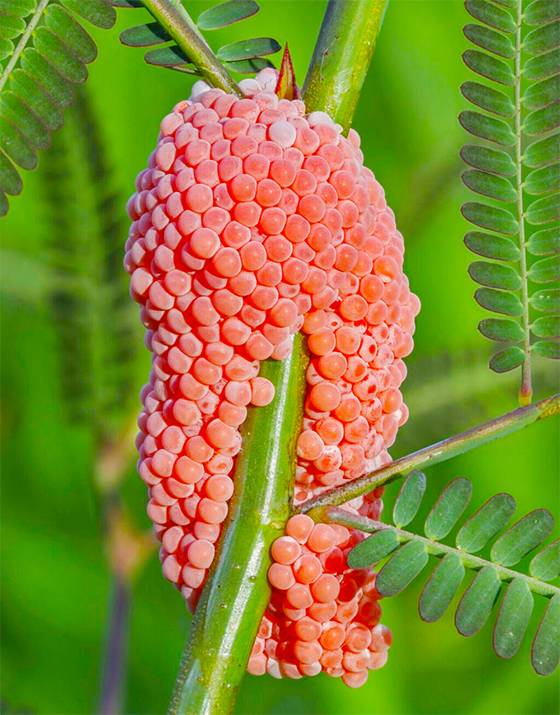
Climate change has also played a role in their spread. Rising global temperatures allow these snails to survive in areas that were once too cold. With each passing year, their potential habitat expands, putting more ecosystems at risk. Fast reproduction further fuels their invasion; a single cluster of eggs can contain 500–700 developing snails, meaning even a small infestation can grow out of control within weeks.
How aquarium dumping caused the apple snail invasion
One of the primary causes of apple snail introduction into non-native regions is irresponsible aquarium dumping. Owners often release unwanted snails into streams, ponds, or lakes, believing they are helping the animals. Instead, this releases a highly invasive species into delicate environments.
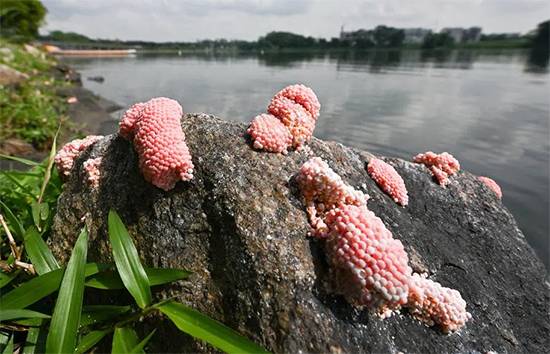
The United States saw its first reports of apple snails in the 1970s. Since then, they have spread through states such as Texas, Louisiana, Florida, and others. Specialists warn that releasing aquarium pets—even seemingly harmless ones—can trigger devastating ecological consequences.
From food experiment to global environmental disaster
The apple snail problem escalated in the 1980s, when a species was introduced to Taiwan in hopes of establishing a new escargot industry. Instead of becoming a popular food source, the snails brought a dangerous parasite known as rat lungworm (Angiostrongylus cantonensis), which can cause severe illness in humans if contaminated snails are eaten undercooked.

Worse still, the snails began consuming rice crops, threatening local farmers’ livelihoods. As the population spread across Asia and eventually to Hawaii, they continued damaging agriculture and ecological systems. Today, apple snails remain a serious concern in the United States, where they impact agriculture, public health, and water-dependent industries.
Apple snail eggs: What you should do if you find them
Apple snail eggs are easy to identify thanks to their distinctive bubble-like clusters of bright pink or orange eggs. Despite their striking appearance, they must be removed quickly to prevent infestations.
Here’s what to do:
Wear gloves:
Apple snails may carry parasites harmful to pets and humans. Never touch the eggs with bare hands.
Scrape off the eggs:
Use a plastic scraper, soft brush, or spatula to gently remove them from surfaces like rocks, wood, or tank walls.
Dispose of eggs safely:
Seal the eggs in a plastic bag, crush them, and place them in the trash. Never flush them—this can worsen the spread.
Check for newly hatched snails:
Inspect the surrounding area for tiny snails and remove them promptly. Their reproductive rate means any oversight can lead to a rapid population boom.
What kills apple snails effectively?
If apple snails invade your garden, quick action is important. The most effective strategies target both adult snails and their eggs.
Remove their habitat:
Apple snails require freshwater areas to survive. Draining standing water or reducing moisture can limit their ability to thrive.
Freeze adult snails:
Placing snails in a freezer at 0°C for 12 hours will kill them humanely and effectively. For temporary sedation (useful when handling them), place them at around 5°C for 30 minutes.
Destroy eggs immediately:
Since egg clusters contain hundreds of developing snails, removing them is the best way to prevent future infestations.
Staying proactive and eliminating eggs early can save your garden and nearby waterways from long-term damage.
Protecting your garden from apple snails
Although apple snails may look beautiful, they are anything but harmless. Their rapid reproduction and appetite for aquatic plants make them a significant threat to local ecosystems. By learning how to identify their eggs, safely remove them, and reduce their habitat, you can protect your garden from invasion.

Staying vigilant, acting early, and educating others will help keep your environment healthy. Share this information to help spread awareness and prevent these invasive pests from causing further harm.






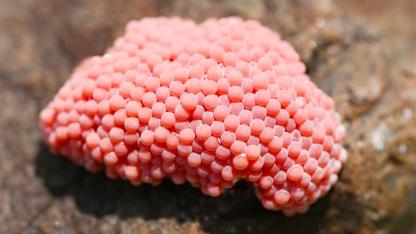




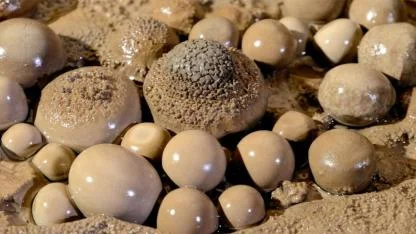
Yorumlar
Kalan Karakter: